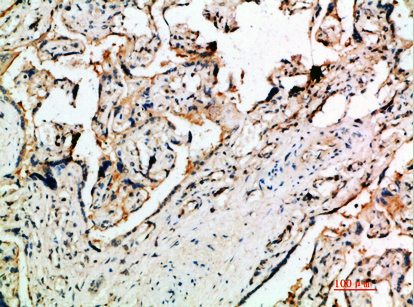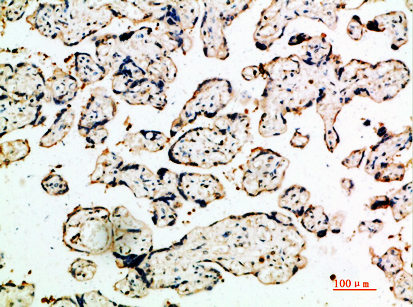

| WB | 咨询技术 | Human,Mouse,Rat |
| IF | 咨询技术 | Human,Mouse,Rat |
| IHC | 1/50-300 | Human,Mouse,Rat |
| ICC | 技术咨询 | Human,Mouse,Rat |
| FCM | 咨询技术 | Human,Mouse,Rat |
| Elisa | 咨询技术 | Human,Mouse,Rat |
| Aliases | D-dopachrome decarboxylase (EC 4.1.1.84) (D-dopachrome tautomerase) (Phenylpyruvate tautomerase II) |
| Entrez GeneID | 1652; |
| Host/Isotype | Rabbit IgG |
| Antibody Type | Primary antibody |
| Storage | Store at 4°C short term. Aliquot and store at -20°C long term. Avoid freeze/thaw cycles. |
| Species Reactivity | Human,Mouse,Rat |
| Immunogen | Synthetic peptide from human protein at AA range: 50-90 |
| Formulation | Purified antibody in PBS with 0.05% sodium azide,0.5%BSA and 50% glycerol. |
+ +
以下是关于DDT抗体的模拟参考文献示例(非真实文献,仅供格式参考):
---
1. **文献名称**: *Development of a Monoclonal Antibody for DDT Residue Detection in Environmental Samples*
**作者**: Zhang, Y. et al.
**摘要**: 研究报道了一种针对DDT代谢物(如DDE)的高特异性单克隆抗体的制备方法,基于ELISA技术实现环境中痕量DDT残留的灵敏检测,检测限达0.1 ppb。
2. **文献名称**: *Polyclonal Antibody-Based Immunoassay for DDT in Agricultural Products*
**作者**: Gupta, R.K. & Patel, S.
**摘要**: 通过偶联DDT类似物与载体蛋白免疫动物,获得多克隆抗体,建立快速检测农产品中DDT污染的免疫层析试纸条,验证了其在果蔬样本中的实用性。
3. **文献名称**: *Recombinant Antibody Fragment for DDT Biosensor Applications*
**作者**: Müller, C. et al.
**摘要**: 利用噬菌体展示技术筛选出抗DDT的重组抗体片段,并集成到电化学生物传感器中,实现对水体和土壤样本的实时、无标记检测。
4. **文献名称**: *Cross-Reactivity Analysis of Anti-DDT Antibodies with Organochlorine Pesticides*
**作者**: Tanaka, M. et al.
**摘要**: 评估了抗DDT抗体与其他有机氯农药(如六六六、氯丹)的交叉反应性,为优化免疫检测方法的选择性提供依据。
---
**建议**:实际文献可通过PubMed、Web of Science等平台以关键词“DDT antibody”或“immunoassay DDT”检索,并优先选择近10年研究以获取最新技术进展。
**Background of DDT Antibodies**
DDT (dichlorodiphenyltrichloroethane), a synthetic organochlorine insecticide, was widely used in agriculture and public health until its environmental persistence and toxicity led to global restrictions. Despite bans, DDT and its metabolites remain prevalent in ecosystems, bioaccumulating in organisms and posing health risks. Detecting DDT residues is critical for environmental monitoring and human safety.
Antibodies specific to DDT are developed for immunoassay-based detection methods, such as ELISA (enzyme-linked immunosorbent assay). Since DDT is a small molecule (hapten), it must be conjugated to carrier proteins (e.g., BSA) to induce an immune response in animals. Polyclonal or monoclonal antibodies are then generated by immunizing hosts (e.g., rabbits or mice) with the DDT-protein conjugate. These antibodies bind to DDT or its metabolites, enabling sensitive, cost-effective, and high-throughput screening in complex samples (soil, water, food).
Challenges include minimizing cross-reactivity with structurally similar compounds (e.g., other organochlorines) and optimizing antibody affinity for trace-level detection. Recent advancements involve phage display libraries or recombinant antibody technologies to improve specificity. DDT antibodies are vital tools for regulatory compliance, ecological studies, and exposure assessments, though their utility depends on continuous refinement to address evolving analytical demands.
×